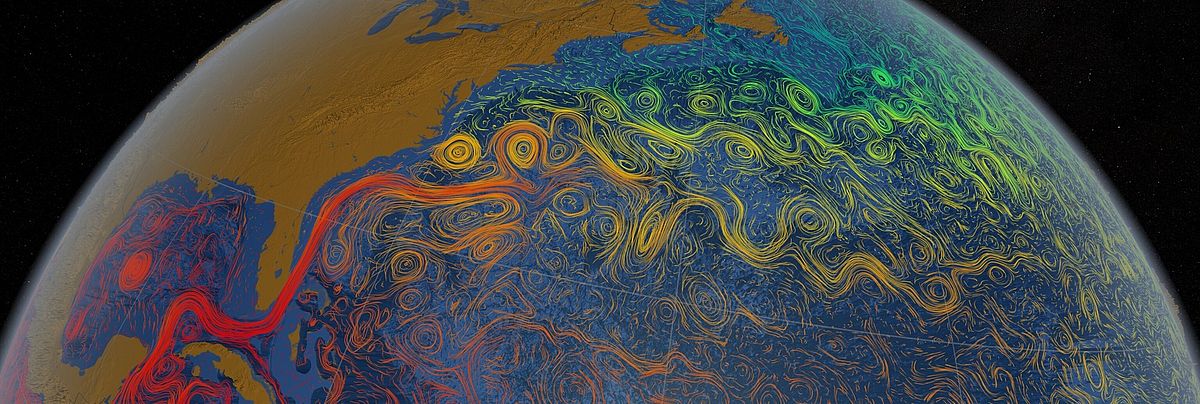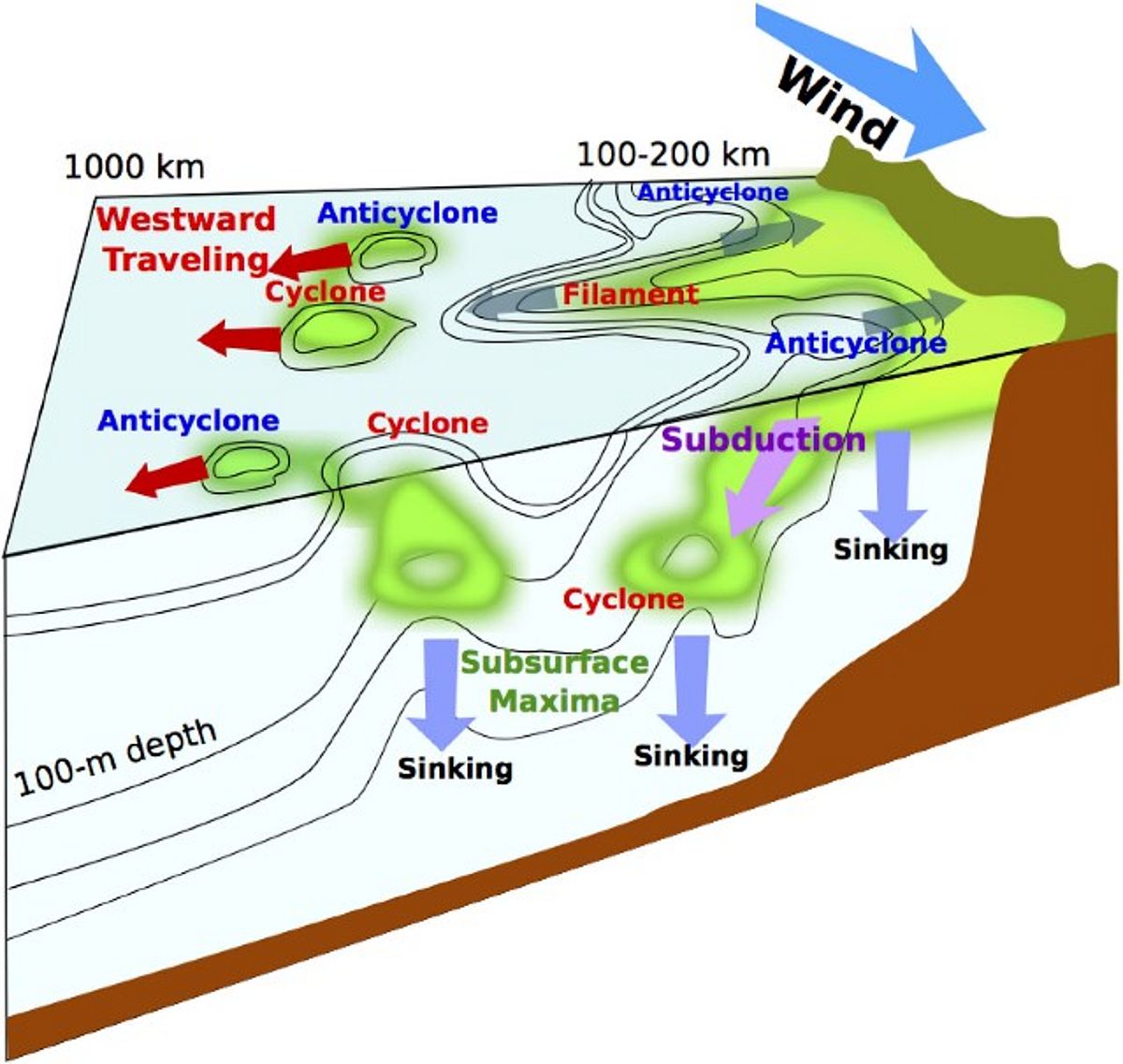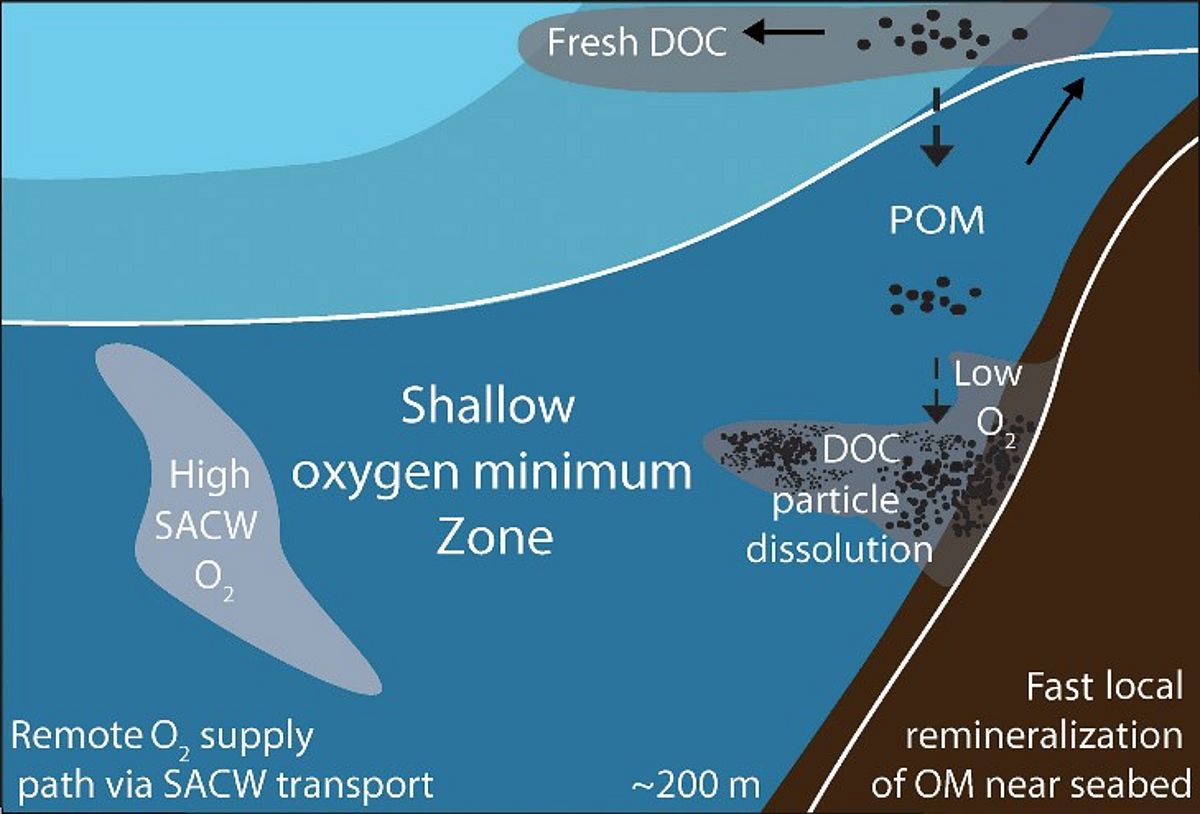With a truly collaborative effort, we investigate the role of mesoscale eddies for the lateral transport of biogeochemical properties and its coupling to the biological carbon pump in the Canary Current System as part of the REEBUS project (Link to project page: https://www.ebus-climate-change.de/reebus). Our particular goals are (1) to determine the influence of mesoscale eddies on upper ocean organic carbon distribution, (2) to understand the influences of eddy dynamics on microbial productivity and organic matter turn-over and (3) to assess the role of EBUS in the lateral supply of organic matter to the central Atlantic Ocean. With our work, we aim at improving the representation of eddies in climate models to gain a more reliable simulation of the global energy cycle and enable more accurate climate forecasts.
To assess the influence of mesoscale eddies on upper ocean organic carbon dynamics, we will determine a variety of geochemical and biological parameters. Organic carbon distributions will be obtained form the spatial distribution as well as the lateral and vertical fluxes of dissolved and non-sinking organic matter, parameters that are rarely considered in current models. Additionally, we will investigate organic carbon turn-over in and around eddies by quantifying microbial process rates including heterotrophic microbial biomass production, primary production, exudation, organic matter degradation and microbial respiration rates. Finally, we will identify organic biomarkers for water mass and carbon transport as well as organic matter production and degradation processes that will help us to reconstruct eddy trajectories and their influence on biogeochemical processes following eddy dissipation. Understanding the chemical composition, microbial cycling and eddy-driven transport of fresh dissolved and non-sinking organic matter in and out of highly productive coastal upwelling systems will result in better estimates of future climate change impacts on oxygen, nutrient and CO2, all of which are important parameters for the future development of Earth’s climate and marine biota.





